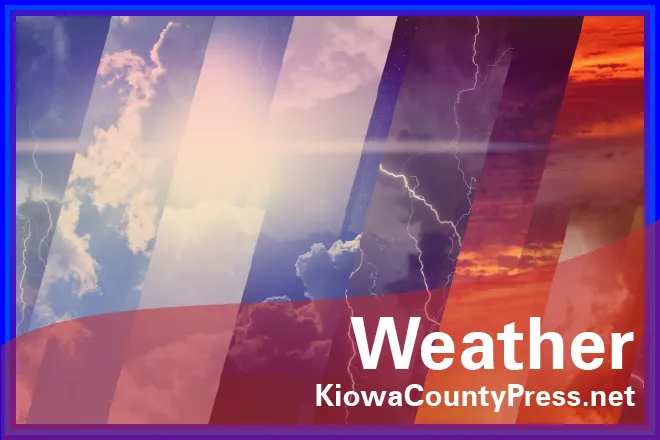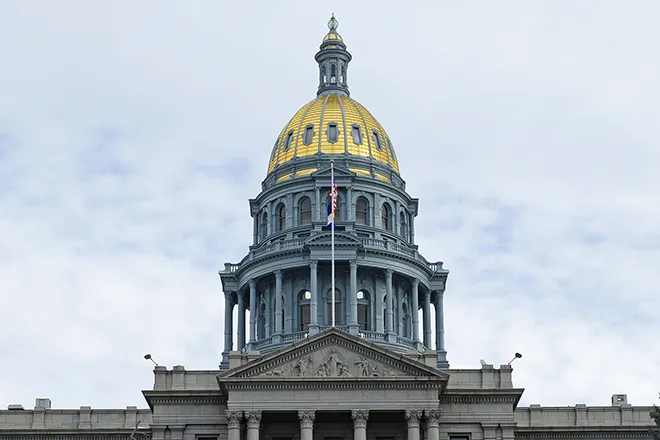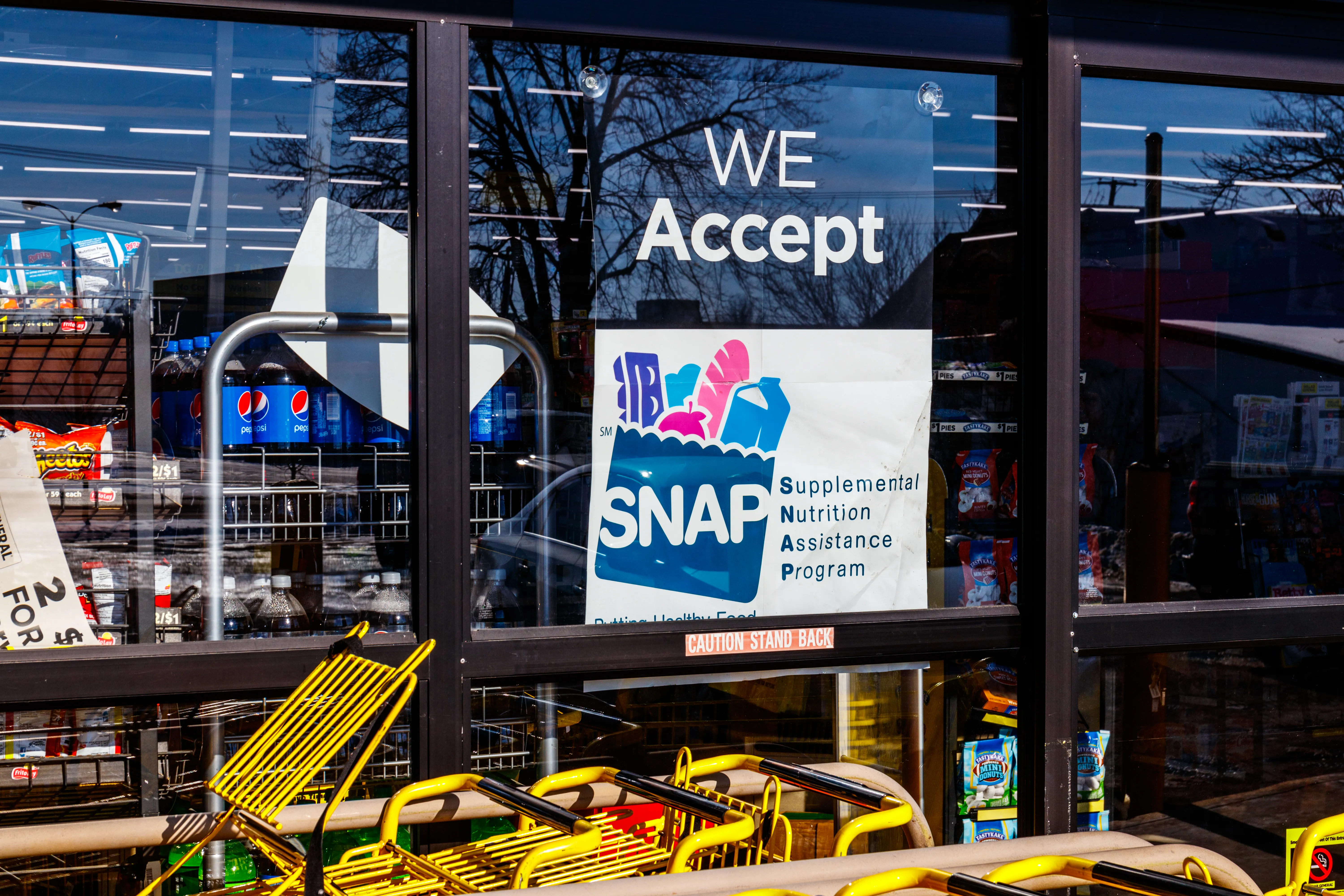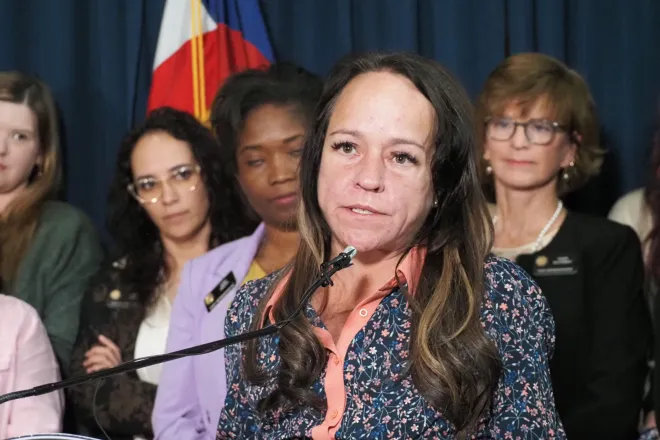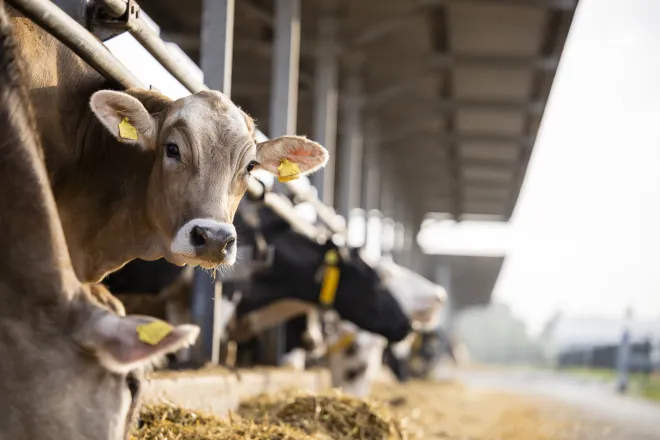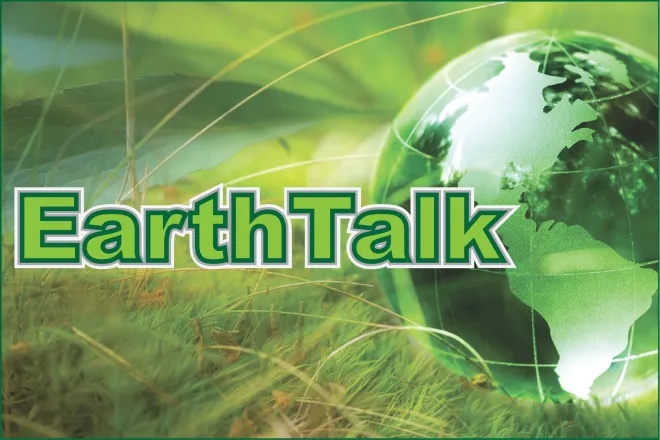
Commentary - No 24-hour National Weather Service in Goodland, Kansas? We’ll all pay, one way or another.
Bad weather doesn’t keep business hours.
Of the top 10 tornadoes that have wreaked death and destruction in Kansas, most came near or after dark, according to the National Weather Service. The Udall tornado of 1955 struck at 10:15 pm and killed 80, making it the deadliest twister in state history.
That’s why the National Weather Service’s closing of the Goodland forecast office overnight is so alarming. Goodland is among eight locations that had reduced their hours, or were planning to, because of the Trump administration’s cuts to the federal government. Staffing at the NWS has taken a beating under DOGE, according to reporting by the Washington Post. In an open letter, five former NWS directors warned the cuts may “endanger lives.”
The Goodland office serves northwest Kansas and parts of Nebraska and Colorado. About 17 miles from the Colorado border on I-70, severe weather around Goodland ranges from tornado-producing spring storms to winter blizzards that shut down the interstate.

But it’s not just the Goodland County Warning Area, a 21,000-square-mile region with more than 80,000 people, that’s at risk. Understaffing at Goodland and other forecast offices that have curtailed hours, including Wyoming and California, creates an additional burden for meteorologists at fully staffed locations. Somebody has to keep an eye on the weather, because the NWS is the federal agency responsible for issuing advisories, watches, and warnings.
If you live in Tornado Alley, you know how essential those warnings can be. The alley is a broad swatch of the Great Plains, from Texas to South Dakota, where dry cold air from the northwest collides with warm moist air from the south. Kansans are familiar with the feeling along about dusk when conditions are ripe for a twister. The sky turns a peculiar shade of green, a thunderstorm approaches and the air smells like river water.
A public affairs specialist for the NWS at Silver Springs, Maryland, did not respond to a request for comment by deadline. Specifically, the spokesperson was asked if the Goodland office would remain closed overnight, and whether that represented a threat to public safety.
While the NWS did not respond, a spokesman for the union that represents federal weather service workers said there was no immediate crisis. Meteorologists at other regional forecast offices had agreed to keep an eye on the weather while the Goodland office was closed overnight. But, he said, a 20% reduction in forecast office staffing since Trump took his second oath of office poses a long-term threat.
“There is no question that the public safety for the community is at risk,” said Tom Fahy, legislative director of the National Weather Service Employees Organization. “(The workers) have done everything they can to shore up the holes and come up with a work flow schedule that will allow individuals not to be burned out.”
Weather service employees are dedicated, hard-working individuals, he said, who take their mission to protect lives and property seriously.

© lloydmp - iStock-145131807
The Goodland is among the two worst hit of the 122 forecast offices in the nation, Fahy said. Goodland normally has 13 meteorologists, but because of DOGE cuts and a federal hiring freeze imposed in January, is down to just five. It ties with a forecast station in Hanford, California, as the most understaffed.
While we are at the tail end of what is usually thought of as tornado season, May through early June, the NOAA National Severe Storms Laboratory at Norman, Oklahoma, cautions that twisters are unpredictable. They can come at any time of the year, at any time of the day, and meteorologists still aren’t sure what causes them.
“The truth is that we don’t fully understand,” according to the Severe Storms Laboratory website. “The most destructive tornadoes occur from supercells, which are rotating thunderstorms with a well-defined radar circulation called a mesocyclone. (Supercells can also produce damaging hail, severe non-tornadic winds, frequent lightning, and flash floods.)”
While I’ve seen scores of small twisters form, touch down, and spin themselves away within a few minutes, I’ve never spotted a really large tornado. These storms are measured by the Enhanced Fujita Scale, from 0 to 5, based on estimates of observed damage. A common EF0 has wind gusts up to 85 mph and produces little damage. A rare EF5 has wind speeds of more than 200 mph and produces “incredible” damage. The tornado that struck Udall in 1955 was an EF5. So was the Greensburg twister of 2007 and the Joplin, Missouri, tornado of May 2011, a storm that killed 158 people and demolished a third of the town.
I witnessed the aftermaths of the Greensburg and Joplin tornadoes in my capacity as a journalist, and the devastation of each was nightmare-like. In Greensburg, houses were turned to kindling and schools were reduced to piles of bricks. Trees were snapped off at about 10 or 12 feet, as if somebody had driven a giant lawnmower across town.
At Joplin, there was similar destruction, and the neighborhood where my grandfather’s house had stood was unrecognizable. The area looked like it had been shredded by a buzzsaw and then flattened. The human suffering across town was on a massive scale that night, with bodies in the streets and survivors sitting on curbs wearing trash bags as their only defense against the rain. I’ve never taken a roof over my head for granted since.
The Greensburg tornado was a two-mile wide EF5 that blew up from the southwest. The National Weather Service issued a warning for Greensburg at 9:19 p.m. The storm hit Greensburg dead-center at 9:45, destroying approximately 1,000 homes and businesses, or about nine-tenths of the town. The response by the Federal Emergency Management Agency required 15 federal entities, including the U.S. Army Corps of Engineers and the Environmental Protection Agency.
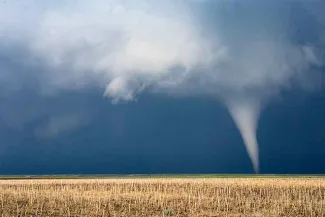
Tornado. © mdesigner125 istock.com
Now, cuts to the weather service by DOGE in the name of governmental “efficiency” threaten to cripple the weather alert warning systems that saved untold lives in Greensburg. There was no such warning system in 1955 for Udall, and that’s one of the reasons that casualties were so high. To decrease the number of staff available for weather forecast offices in the name of efficiency is like reducing the number of life preservers on an ocean liner to save space.
But the explanation that DOGE is out to improve government by making it smaller and more effective is a canard. The real reason the NWS and other federal agencies are being kneecapped is to punish federal workers, dismantle the machinery of government, and achieve a long-cherished dream of neoliberalism, an economic philosophy from 1938. Don’t let the name fool you, because there’s nothing liberal or progressive about it.
Never heard of it?
Allow me a few paragraphs to explain.
“Its anonymity is both a symptom and a cause of its power,” write George Monbiot and Peter Hutchison in their 2024 book on neoliberalism. “It has caused or contributed to most of the crises that now confront us: rising inequality; rampant child poverty; epidemic diseases of despair; off-shoring and the erosion of the tax base; the slow degradation of healthcare, education, and other public services; the crumbling of the infrastructure; democratic backsliding; the 2008 financial crash; the rise of modern-day demagogues, such as Viktor Orban, Narendra Modi, Donald Trump, Boris Johnson, and Jair Bolsonaro; our ecological crises and environmental disasters.”
Neoliberalism, according to Monbiot and Hutchison, is an ideology whose central belief is that competition is humanity’s defining feature, but that our greed and selfishness and the free market will lead to social advances. The term “neoliberal” was coined at a conference in Paris in 1938, but it’s been around since at least 1776, when Adam Smith used the metaphor of the “invisible hand” in his “Wealth of Nations.”
Put another way, think of Gordon Gekko in Oliver Stone’s 1987 movie “Wall Street.” In the movie, Gekko — played by Michael Douglas — says greed is “good.” Gekko’s soliloquy of nearly 40 years ago sounds disturbingly modern.
“America has become a second-rate power,” Gekko says. “Its trade deficit and its fiscal deficit are at nightmare proportions. Now in the days of the free market when our country was a top industrial power, there was accountability to the stockholder. … The point is, ladies and gentleman, is that greed, for lack of a better word, is good.”
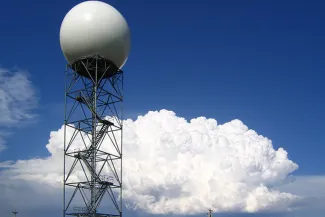
Greed, according to Gekko, will save that “malfunctioning corporation” called the USA.
What does this have to do with the National Weather Service?
Everything.
The DOGE cuts aren’t meant merely to make the federal government smaller, but also to make certain sectors of it ripe for privatization. The transfer of public sector assets to private companies is a long-held neoliberal tenet. And the privatization of the National Weather Service is an unambiguously stated goal of Project 2025, the right-wing playbook for the second Trump administration.
Juan Declet-Barreto, a senior social scientist at the Union of Concerned Scientists, argued in a March essay that privatizing the weather service would result in the greatest harm to those who are the least able to pay for critical warning information.
“Public services exist to provide parity in access to all people in society without regard to their ability to individually fork out money for such a service,” Declet-Barreto wrote, “so those unable to pay will end up paying twice: once with their tax dollars, and once with their wellbeing or with their lives. Paywalled weather alerts will deprive individuals, households, or towns with lower income of access to life-saving services.”
Fahy, the weather service union legislative director, told me he doubts the weather service will be privatized, because so many commercial firms already get its data for a few dollars a month.
But I’m not so sure, because the “commercialization of weather technologies” is so clearly spelled out in Project 2025. It’s all on page 675, in which the NWS is identified as part of a “colossal operation that has become one of the main drivers of the climate change alarm industry and, as such, is harmful to future U.S. prosperity.”
Know what else is harmful to prosperity? Tornadoes that eat your town.
Here in Kansas, we typically associate weather alerts with tornadoes, flooding, blizzards, and temperature extremes. But every location across the country has its own hazards, from wildfires to volcanic ash to hurricanes.
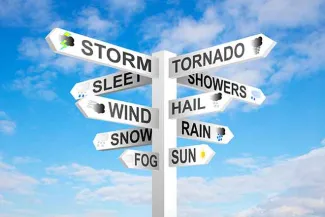
© iStock - Eyematrix
But weather alerts aren’t the only things under threat by DOGE cuts. Of the 15 federal agencies responding to Greensburg in 2007, many are now targeted for downsizing. This may lead to little warning of severe weather and reduced help after. We’re already seeing the latter, as Trump’s FEMA has denied disaster relief requests from states hit by tornadoes and hurricanes.
Michael Lewis devoted a chapter to the Joplin tornado in his 2018 book, “The Fifth Risk.” The death toll in Joplin was the highest since the government had started issuing tornado warnings, in 1948. But it wasn’t the failure of the National Weather Service that had killed 158 in Joplin, Lewis concluded, because the sirens blared 17 minutes before the storm hit. Instead, it was the inability of citizens to understand their government — and the inability of the government to understand its citizens. Not enough Joplin residents had sought shelter when warned because they had the “false confidence” they would not be hit. Even a congressman misunderstood that weather channels and phone apps come from data provided by the NWS.
For complicated reasons, human beings have a difficult time imagining the things that might actually kill them. Lewis said that’s one of the reasons, after the Joplin tornado, that the weather service began encouraging news outlets to help people imagine what might happen if they didn’t take cover: “Complete destruction of entire neighborhoods … making the area unrecognizable to survivors.”
Comparable warnings are appropriate for the era of Trump and DOGE.
We were told, but we just couldn’t imagine how bad it would be. Surely our weather forecast center, our university, our Medicaid won’t be hit. Now we have some of the damage assessments, and it amounts to an EF5 political disaster.
The crippling of the NWS forecast office at Goodland is a symptom of a hostile takeover of the federal government by a quasi-governmental group, DOGE, that until recently was headed Elon Musk, the president’s biggest donor. DOGE’s actions have made little sense, unless you think cruelty makes sense, or unless you realize they resemble the way in which a corporate raider will strip assets from a company and then sell off the carcass.
When severe weather threatens, who would you rather get your information from?
Your NOAA weather alert radio, activated automatically and broadcasting accurate and authoritative bulletins compiled by the nearest NWS forecast station, or Big Don’s ‘Nado Tracker app? Oh, here’s a heads up on customer service for the ‘Nado Tracker.
It’s only available 9 to 5, Monday through Friday. Holidays excluded. And customer support is for premium members only.
Max McCoy is an award-winning author and journalist.



